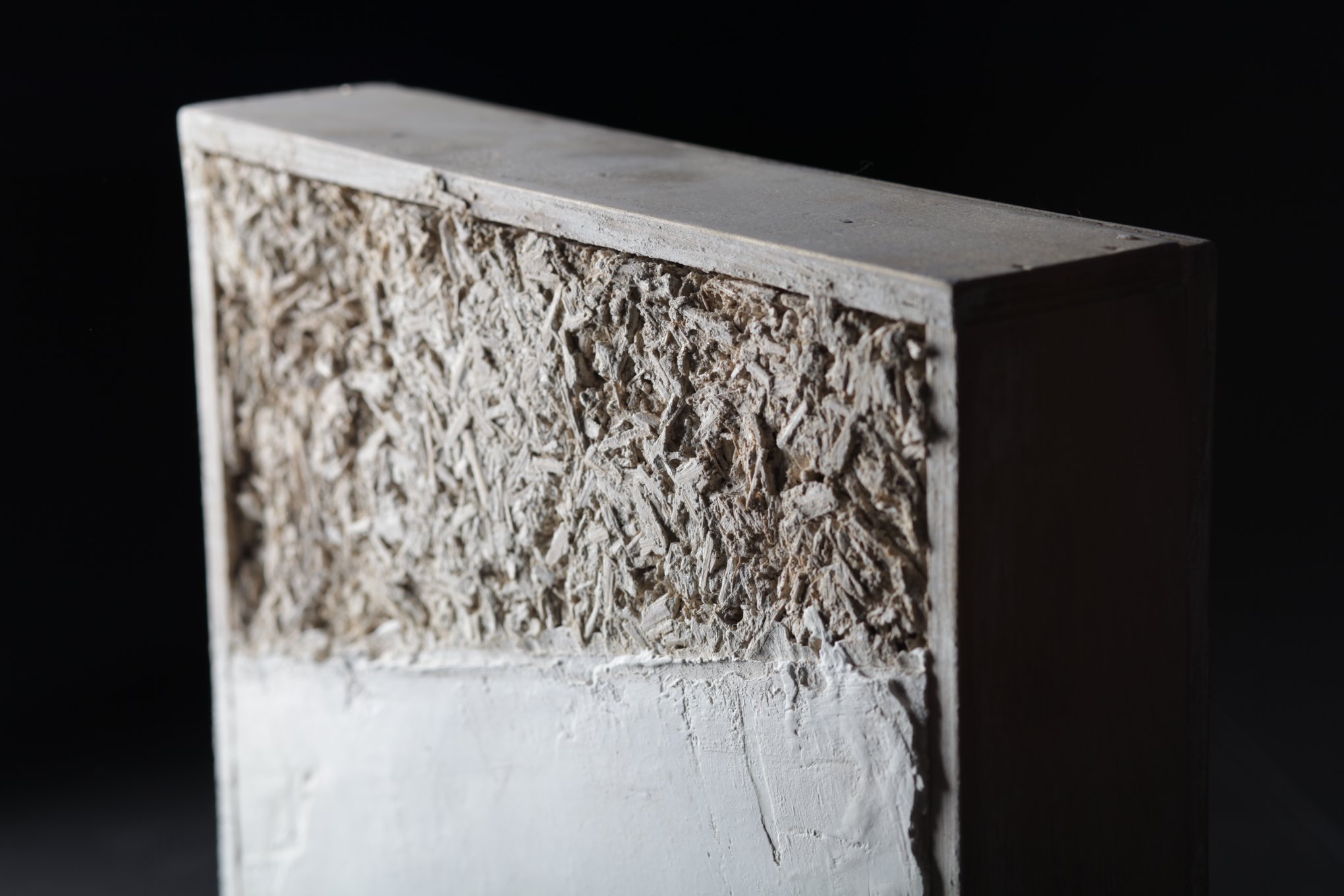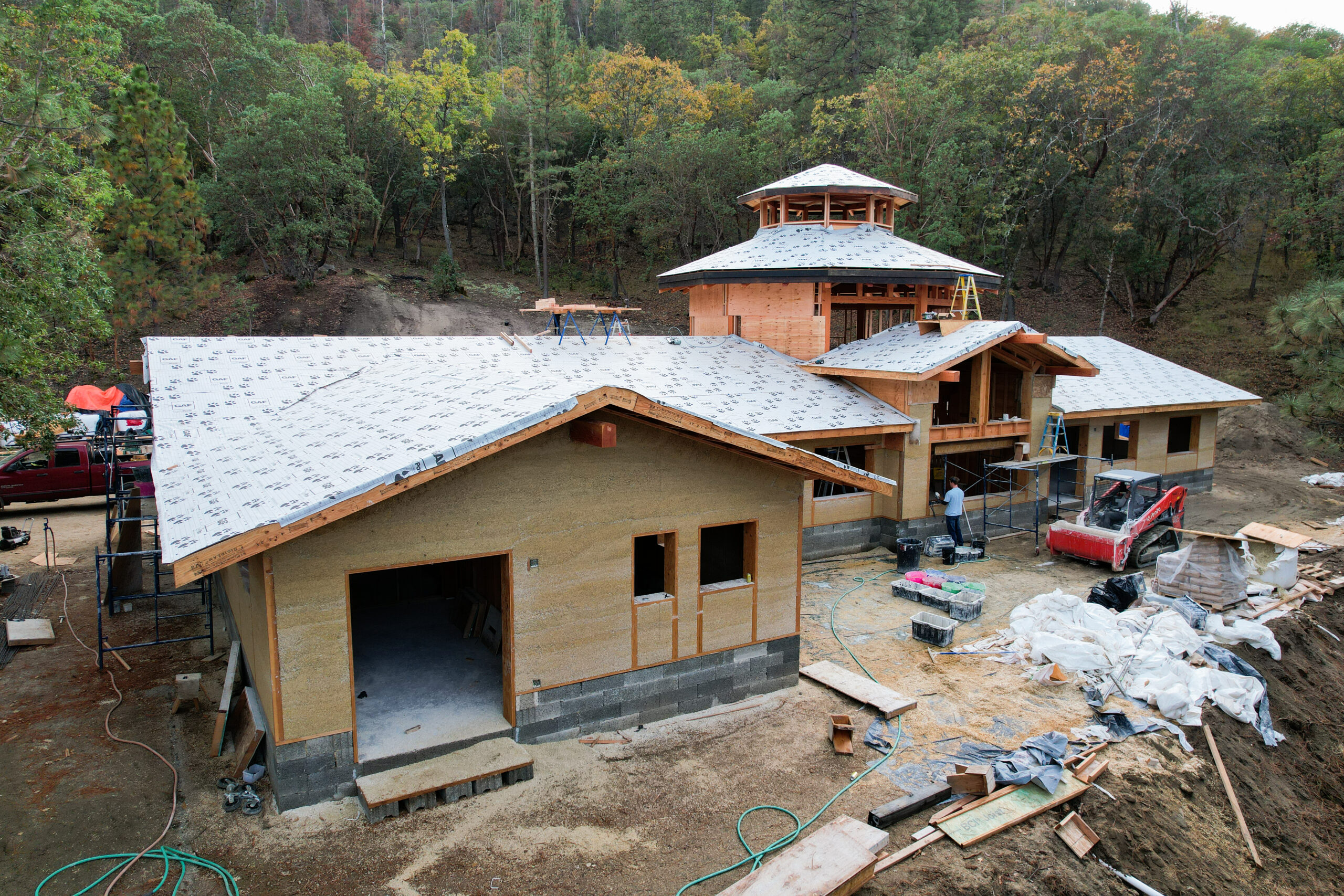by Kylie Loynd, The Polishing Stone
When my husband entered the house he uttered one word, “fiberglass,” and headed straight for the shower. I knew Kurt must have spent the day in someone’s attic. Working with this type of insulation is his least favorite part of remodeling. He’ll be raspy-throated and itchy for a couple of days before feeling normal again. I’m thankful there are better alternatives for our own home.
Would you let a kid take a flying leap into a pile of insulation? Ours did, into a non-toxic product called UltraTouch. We’d read an article about the manufacturer, Bonded Logic in Chandler, AZ, that has 25 years of insulation experience, and the next day picked some up at Seattle’s Environmental Home Center. You can search for suppliers by zip code on their website.
As soft with the earth as it is on your hands: UltraTouch is made from denim and cotton fibers and requires little energy to manufacture. I’d imagined the denim was hijacked from someone’s hips, but these fibers are pure post-industrial waste, gathered straight from the cutting room floor. Free of fiberglass, formaldehyde, and resin, UltraTouch creates no volative organic compound (VOC) off-gassing and won’t irritate your skin during installation. The eco-friendly content and make lose nothing in performance; its thermal and acoustic ratings are high. The U.S. Green Building Council reviews products for their contribution to high-performance, sustainable buildings. The greener the product, the more LEED (Leadership in Energy and Environmental Design) credits they assign, and UltraTouch earns several.
People-friendly installation: UltraTouch comes in thick, rectangular strips called batts, designed to press in place between stud bays. The batts get compacted in packaging; to fluff, simply shake them out. When Kurt installed the insulation in an extra bedroom we were building in our garage, two little helpers burst upon the scene. He started the strips at the ceiling and our daughters, three and five at the time, took over pressing in the bottom section to the floor. Ripping off chunks to fill in the nooks and crannies around door and window framework is a perfect kid-sized job. For a more precise adult cut, score once with a utility knife against a straight edge and then tear with your hands.
The tech stuff: UltraTouch is used for both commercial and residential insulation. Rated Class A (the highest) in fire resistance, it contains boric acid — a natural fire retardant — which is low in toxicity to both people and animals. Borates also deter hungry insects like carpenter ants, termites, and cockroaches, as well as mildew and various kinds of fungi. Insulation is measured by its R-value, a material’s resistance to heat flow. UtraTouch carries an insulating value of R-3.7 per inch, comparable to or higher than most fiberglass batts. The final product is 85 percent post-industrial cotton, 10 percent fireproofing and 5 percent polyolefin fiber (a synthetic binder). This insulation has no facing. If local building code requires a vapor barrier, use poly sheeting across the insulated surface for outer walls. For inner walls and add-on attic insulation, no barrier is needed.
Fiberglass phobia: What can I say? Even when wearing a proper respirator, installing fiberglass insulation is a serious health hazard. Remodels, which involve disturbing previously installed fiberglass, pose even more risk. Fiberglass is made from silica sand, which is heated into glass and then spun into micro-thin fibers. The immediate itch and throat irritation upon installation come from tiny cuts made by the fibers, which are basically shards of glass. Airborne, those little fibers enter the lungs and are comparable in danger to asbestos.
To compound matters, the most common binder used for this product is a formaldehyde-based resin, which enters the body through the tiny incisions as well as through off-gassing. Manufacturers now encase their fiberglass insulation in polyethylene or polypropylene sheeting to keep it from going airborne and to serve as a vapor barrier, but off-gassing still occurs. Though manufacturers hotly contend the health hazard, there are cancer warning labels on most fiberglass insulation sold in the U.S. For many — installers and building occupants alike — the initial irritation stage leads to other serious health complications and subsequent chemical sensitivities. In response to public concern, some manufacturers have produced formaldehyde-free fiberglass insulation, but the micro-fiber risk remains.
The cost factor: Batt for batt, UltraTouch is as least twice the price of fiberglass insulation. But let’s get a reality grip on the impact. The cost of insulation in a building or remodeling project is an extremely small part of the total budget. This is not the place where making an eco-product choice will create much difference in your overall cost. The health benefit, on the other hand, is extensive.
Grab a handful of denim insulation and breathe a little easier…
Note: Washington State recently increased the insulation rating required for new construction. It now has the highest required R-value of any state. Check with your supplier about which combination of Bonded Logic products will best suit your project needs.
_______
Bonded Logic Inc. at 480-812-9114 or www.bondedlogic.com.
Reprinted with permission:
The Polishing Stone magazine: Issue #5, February 2005


